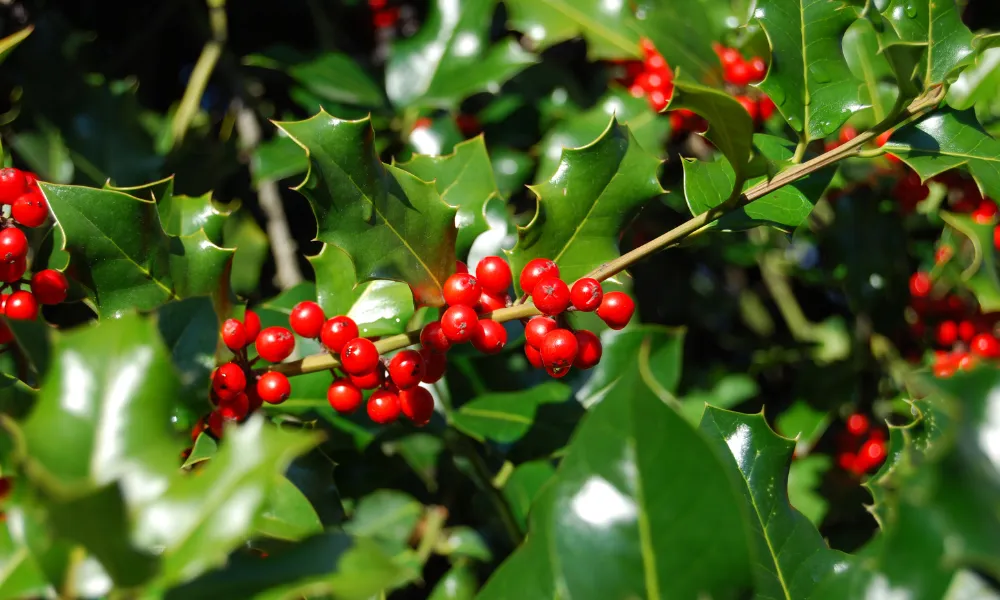
Holly is a much loved winter plant in Ireland. When nearly all other plants have either lost their leaf or gone dormant the deep green leafed plant with the vibrant fiery berry makes its entrance. A very welcome sight for us and the birds alike as they love to eat the berries when all other food is scarce. They will also build their nests in it's prickly branches using it as much needed protection from predators.
Holly is synonymous with Christmas time and we often use it to decorate are houses, putting it in door wreaths and above picture frames to give a festive feel. We love the plant so much we even write songs about it 'The Holly and The Ivy' being one of the most famous, but what is the history of this hardy winter plant?;
Holly has been worshipped by us for eons. The Romans gifted holly as a symbol of Saturn and the winter Solstice.
In paganism they worshipped The Holly King who ruled over the land before relinquishing his grip to The Oak King for the second half of the year. People here would bring it in to their home to protect from Faerie mischief.
Another claim was that if the Holly that was brought in to the home was of a prickly leaf type the man would rule the house for the year whereas if it was smooth it would be the woman.
When cutting a hedge it was common place to leave any holly untouched as the witches were said to run along the top of hedges and it would be a hinderance to them.
It was seen as very bad luck to cut down a Holly tree as it would anger the local fairy population and they were sure to torment you if you did.
As with all folklore however a lot of it was based in practical matters. The Holly left untouched in the hedge was often useful for location reasons and the trees left standing provided nutritious fodder for any livestock when all other food was lacking.
In the Christian tradition now the Holly is said to represent Christ's crown of thorns and the bright red berry the blood of Christ, legend states that the Holly berries were originally white and only turned red when the blood stained them.
One of the German words for Holly is 'christdorn' meaning 'Christ thorn' and some of them believe that the cross was actually constructed from Holly timber.
Holly of course comes in all shapes and sizes, having a genus of over 570 species.
The Ilex Decidua for example has a smooth leaf and is actually deciduous and probably wouldn't be recognised as our classic Holly.
Ilex aquifolium Bacciflava is a yellow berried holly which again wouldn't conform to our classic Christmas decoration.
There was a type of Holly with a white berry that actually grew in Co. Tyrone but it was sadly destroyed in a fire before any of the botanic gardens could get a sample of it.
If you want to plant Holly yourself be aware that they are gendered and it is the female plant that produces the berries. A male must be planted alongside the females for cross pollination. You can spot the differences between the two in the shape of the flowers in the summer. The males have much more prominent stamens from their counterparts. So if you do have a Holly plant that isn't producing berries now you know why!
Happy Christmas!!
Sophie x








